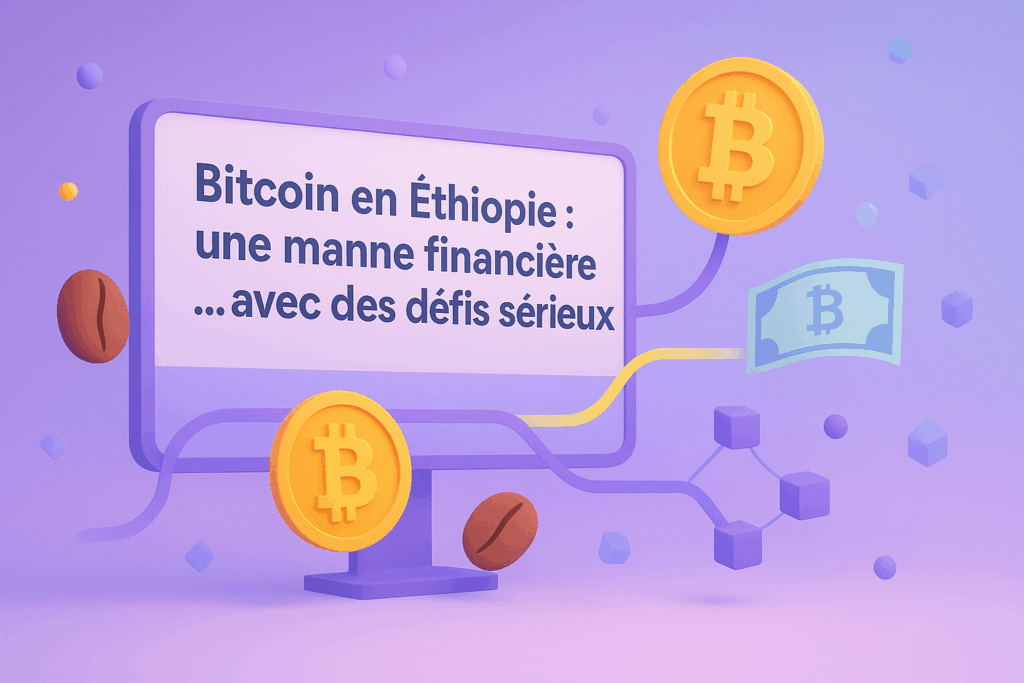
1. A Booming Sector… Driven by Hydroelectric Power
Ethiopia has become a sought-after destination for Bitcoin mining operations, largely due to its abundant hydroelectric resources. Electricity generated by the Grand Ethiopian Renaissance Dam (GERD) offers miners attractive energy costs, a key factor in this energy-intensive industry.
The country has seen the arrival of around twenty players (mostly foreign) who have taken advantage of these favorable conditions to set up large-scale mining farms.
1.1 The Paradox of Surplus Energy
Ironically, Ethiopia allows cryptocurrency mining even though the use of crypto as a currency remains prohibited in the country. Its main interest is therefore fiscal and strategic — generating foreign currency to improve the economy.
However, while energy is abundant at the source, the distribution network struggles to keep up. Less than 25% of the national territory has stable access to electricity.
2. A Significant Revenue… But Highly Energy-Consuming
2.1 Impressive Figures
Bitcoin mining is estimated to have generated nearly $300 million for the Ethiopian economy in a single year. This amount represents a valuable resource in a context of foreign currency deficit.
Moreover, official forecasts estimate that this activity could consume up to 30% of national energy demand by 2025.
2.2 Tensions in Consumption
Currently, mining already accounts for nearly 20% of national electricity production — a critical level for a country with a fragile network.
This situation raises concerns: diverting so much energy to crypto mining could compromise access to electricity for households or industrial sectors.
3. Regulation: Halting Foreign Licenses
Faced with these pressures, Ethiopian authorities have taken a strong measure: suspending the issuance of new licenses to foreign miners. The stated goal is to preserve energy resources for domestic and industrial needs.
Asheber Balcha, head of the public company Ethiopian Electric Power (EEP), emphasized that mining should not deprive Ethiopians of essential services. He stated:
“We must first meet domestic demand before allowing additional players.”
Furthermore, it is planned that revenues from mining will be invested in expanding and modernizing the national electricity grid — a more sustainable use.
4. Structural Challenge: Short Term vs. Sustainable Development
4.1 “Transitional” Activity?
For the Ethiopian government, mining is seen as a temporary tool to monetize surplus energy. By 2030, the plan is to reduce the scope of this activity or redirect it to other sectors.
4.2 Electrical Development and Inclusion
A major challenge remains using mining profits to expand the electricity network, especially in rural areas. However, investments do not always progress at the pace of demand.
The risk is twofold: dedicating a disproportionate share of energy to mining while leaving pockets of the population without reliable electricity.
4.3 A Delicate Balance
Ethiopia’s dilemma is revealing: how to reconcile the economic attractiveness of mining with social and infrastructure priorities?
A lack of strict regulation or poor resource allocation could lead to lasting imbalances.
5. Conclusion: An Opportunity to Manage
The Ethiopian case illustrates both the potential and the pitfalls of cryptocurrency mining in developing countries.
On one hand, it offers an attractive source of revenue and a way to monetize surplus energy.
On the other, it creates tensions on the grid, inequalities in electricity access, and regulatory challenges.
For this model to be viable, Ethiopia will need to define clear and sustainable rules, control consumption, adapt the network, and redistribute profits so that the population truly benefits.










